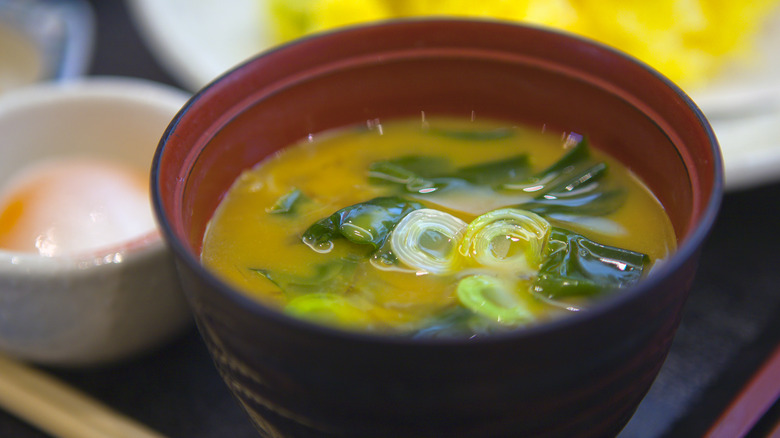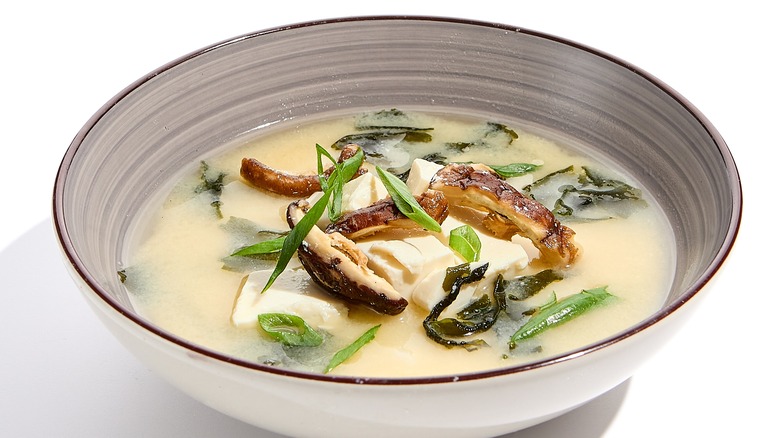The Best Substitute For Tofu In Miso Soup
Umami may be present in western foods like tomatoes and parmesan cheese, but the term (along with the majority of foods defined by it) are Japanese. Miso soup is a prime example of a classic Japanese dish steeped in layers upon layers of umami-richness. Tofu is one of the most popular ingredients in miso soup, cut into soft cubes that absorb and take on the flavors of the aromatic and robust miso and dashi that make up its broth. However, if you're looking to branch out, shiitake mushrooms are the tofu substitute that'll provide a textural upgrade and an extra boost of umami-richness.
Most mushrooms have some degree of glutamate, one of the key umami compounds, but shiitakes are the highest in both glutamate and guanylate. They thus deliver a complementary umami-richness to the fermented and aromatic umami notes in the other ingredients. Shiitake mushrooms' satisfyingly bouncy chew is just as hearty as firm tofu. Plus, As a common ingredient in Japanese and East Asian cuisine, shiitakes won't detract from the soup's culinary profile.
Miso soup comes together quickly, as the aromatic base and the mushrooms themselves take no time to cook. You can saute the shiitakes with the aromatics before adding the broth and miso paste. In her recipe for shiitake mushroom soup, recipe developer Miriam Hahn adds raw shiitakes to a portion of aromatic stock along with other veggies to cook for a few minutes before topping everything off with more broth and miso paste.
Key miso soup ingredients and tips
Miso soup may sound like a simple mixture, but the flavorful broth is the epitome of complexity. Both miso paste and dashi come in different varieties, each with distinct flavor profiles to enhance or balance the taste of shiitake mushrooms. While vegetable or chicken broth are the go-to choices in the West for homemade miso soup, dashi is the traditional broth that's made from a variety of Japan's most umami-rich ingredients like dried kelp, bonito flakes, anchovies, and dried shiitake mushrooms.
Like most stocks, all you have to do to make dashi is add one or more of these ingredients to boiling water, let them steep, then drain the dried ingredients. If you don't have access to the dried ingredients, dashi stock and dashi powder are sold online and at Asian markets. A dried shiitake and kombu dashi would really play up the flavor of the fresh shiitakes you add to your miso soup.
Miso paste comes in red, yellow, and white varieties. Red miso has been fermented the longest and has the most robust fermented and salty flavor, while yellow and white are milder and sweeter; they're all good options for miso soup and depend on your personal preference. Instead of adding the paste directly to a simmering pot of soup, you should dissolve it in a ladle or small bowl of hot broth from the pot before adding it to the soup.

